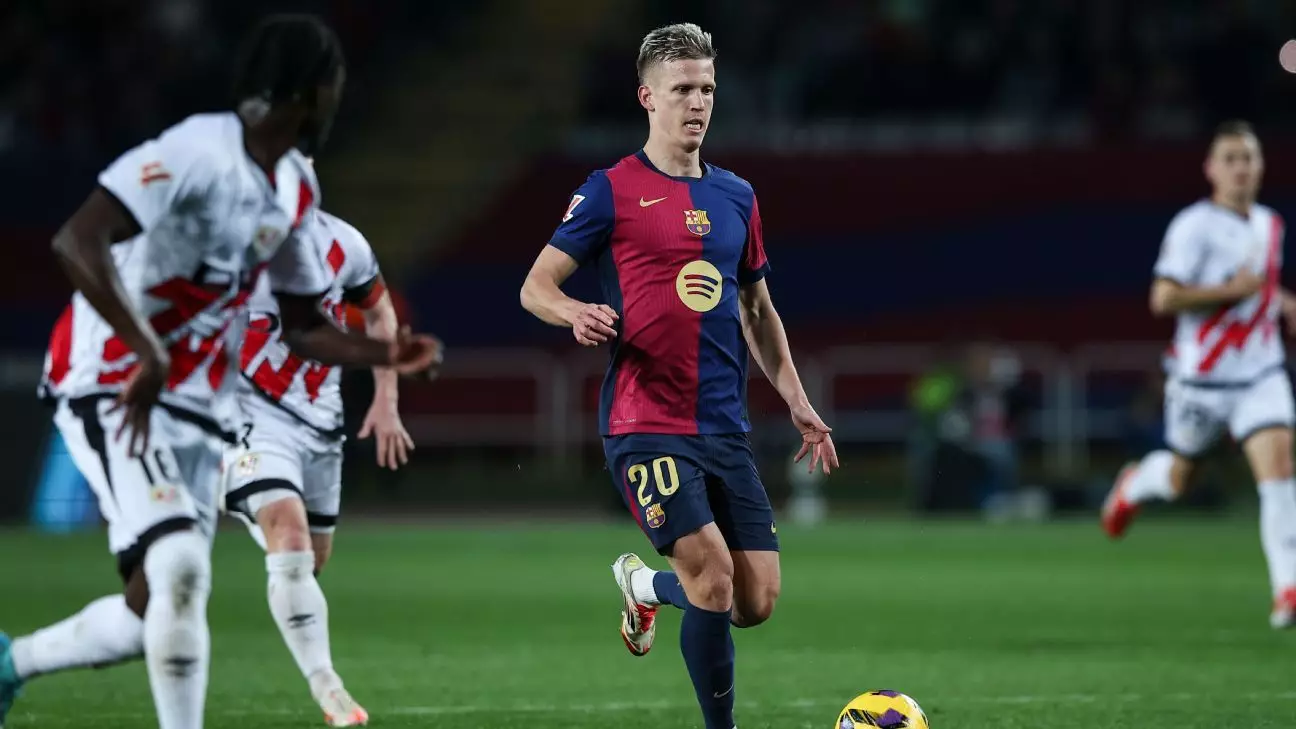FC Barcelona, a club steeped in rich history and global recognition, has been wrestling with significant financial challenges in recent years. After a tumultuous period marked by drastic budget cuts, it appears that the Catalan giants are beginning to chart a course toward fiscal recovery. Recently, LaLiga announced that Barcelona’s annual spending cap has surged to over €463 million (approximately $483.7 million), representing a substantial rise of nearly €40 million compared to the start of the season. This optimistic development signals a turning tide for a club that saw its spending limit slashed to a mere €204 million just a year ago.
Barcelona’s financial uplift is a direct result of strategic moves, particularly the sale of 475 VIP seats at the iconic Spotify Camp Nou. These exclusive seats have been sold to two Middle Eastern investors for an impressive duration of up to 30 years, with the deals valued around €100 million collectively. This landmark transaction not only enhances Barcelona’s immediate cash flow but also fortifies its long-term financial position. The revenue generated from these agreements signifies Barcelona’s commitment to revitalizing its economic outlook, especially while the stadium undergoes redevelopment.
Despite the positive strides, it’s essential to contextualize Barcelona’s financial position within LaLiga’s broader landscape. Barcelona’s current spending cap, while the second highest in the league, still trails significantly behind Real Madrid, whose limit stands at a staggering €755 million. Additionally, other clubs such as Atlético Madrid (€314 million), Real Sociedad (€160 million), and Villarreal (€135 million) also enjoy more extensive budgets than Barcelona, underlining the need for Barcelona to not only stabilize but also substantially elevate its financial standing to remain competitive in both domestic and European football.
Understanding the parameters that shape these spending limits is crucial. LaLiga’s financial regulations dictate that a club’s cap is determined by the difference between its revenues and its non-sporting expenditures, including debt repayments. The ultimate figure indicates the maximum expenditure clubs can allocate towards wages, bonuses, and amortizations on player transfers throughout the season. The implications of exceeding these limits are significant; clubs in violation, such as Sevilla, face severe restrictions in the transfer market, allowing only a fraction of savings to be utilized.
Barcelona’s recent improvements reflect its adherence to these financial rules, as LaLiga confirmed that the club is now in a position to spend in accordance with the 1:1 rule. This policy allows Barcelona to utilize 100% of any financial savings or new revenue generated, which is crucial for building a competitive squad. However, the specter of financial compliance remains, casting shadows on the club’s future dealings.
Despite the club’s improved financial capacity, challenges linger, particularly regarding player registrations. The situation surrounding Dani Olmo and Pau Víctor illustrates the complexities of LaLiga’s regulatory framework. Barcelona reportedly missed a critical deadline to demonstrate compliance with their spending cap, resulting in the inability to register these players. While the club has won a temporary injunction against LaLiga’s ruling from the Spanish sports ministry, which is investigating the case, it faces a precarious wait that could extend for months. Such regulatory hurdles exemplify the intricacies of navigating LaLiga’s financial landscape even amidst recovery.
FC Barcelona is in a pivotal moment of transformation, balancing the excitement of newfound financial flexibility with the weight of regulatory obligations. The club’s ability to capitalize on new revenue streams and navigate the complexities of player registrations will determine the extent of its recovery. As Barcelona looks to reclaim its stature both in LaLiga and the broader European football panorama, the journey ahead will demand meticulous financial management, astute strategic planning, and perhaps most importantly, a cohesive approach to restoring its glorious legacy.

